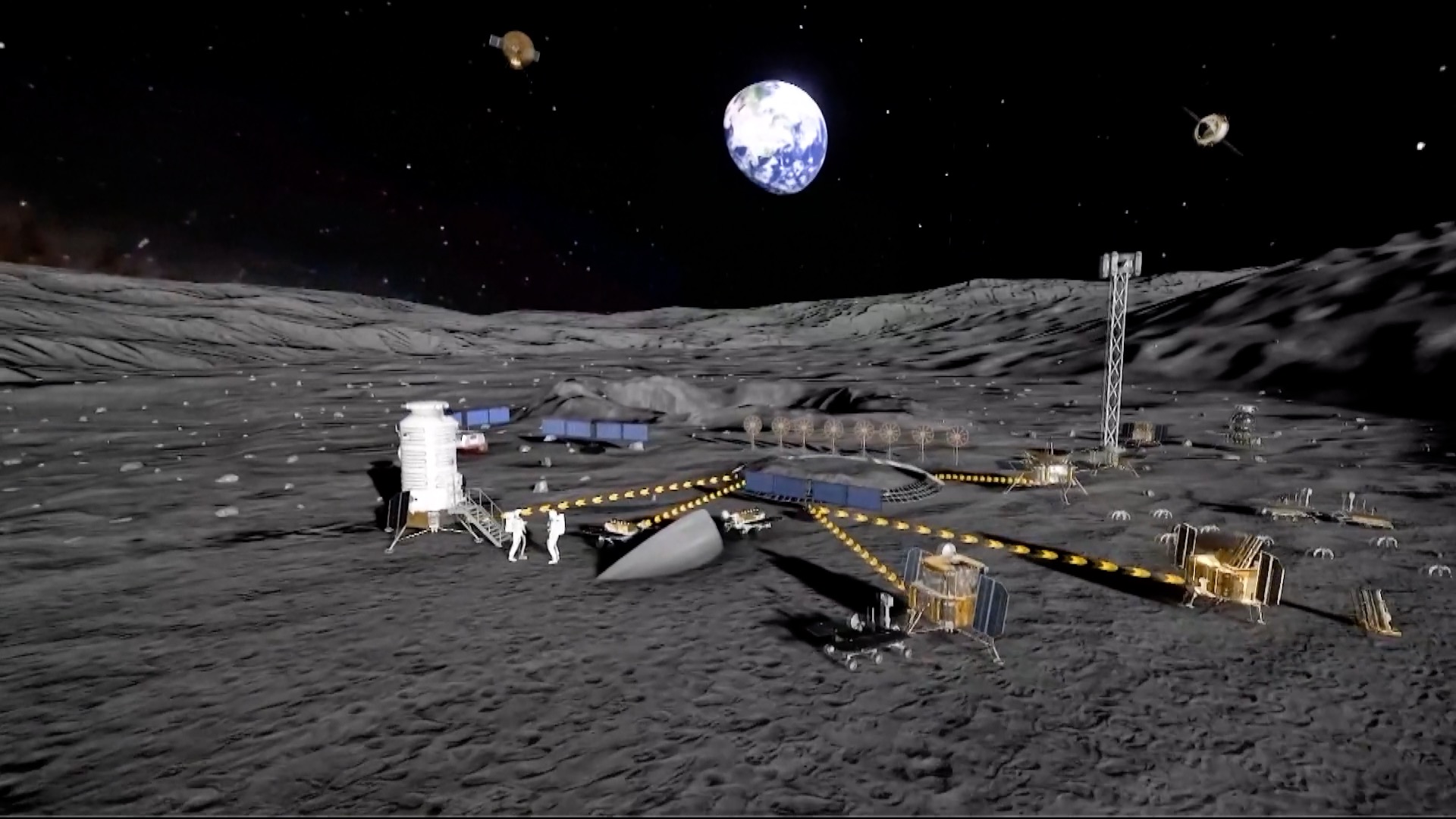China’s Lunar Vision 2028: Robot-Built Base, Plants, Microbes, and Resource Experiments
16th Feb 2024
The China National Space Administration (CNSA) is ramping up efforts for the Chang’e 8 mission, inviting global collaborations to advance its technological prowess. With a slated launch in 2028, the mission encompasses a lander, rover, and versatile multitask robot armed with 14 scientific instruments for comprehensive lunar exploration.
Chang’e 8 Payloads & Lunar Exploration Plans
In an upcoming lunar endeavour, China’s Chang’e 8 mission is set to transport a small ecosystem and various payloads, aiming to assess the feasibility of utilizing lunar resources in the latter part of this decade. Serving as a precursor mission for the envisioned moon base, the International Lunar Research Station (ILRS), slated for collaborative development in the 2030s, Chang’e 8 will play a pivotal role in testing essential technologies crucial for the sustainability of the ILRS. The China National Space Administration (CNSA) recently disclosed specifics about Chang’e 8’s intended payloads in a solicitation for expressions of interest within the country, highlighting the inclusion of in-situ resource utilization (ISRU) and terrestrial ecosystem experiments.
According to the South China Morning Post, one of the available payloads for the application will use the sun’s energy to melt lunar soil and convert it into functional parts. This technology would most likely be utilized to make bricks from lunar dirt and build structures on the moon that may shield future explorers from intense radiation when outside the lunar habitats or even to create base camps. The robots would be used to assemble the bricks into larger structures.
The ecosystem experiment involves a controlled, sealed environment with a two-chain terrestrial ecosystem containing plants and microbes. The goal is to investigate the potential of using lunar soil resources for biological purposes, exploring how they can support life-support technologies like food and oxygen production for a crewed lunar base. In the 2019 Chang’e 4 mission, a cotton seed even sprouted in a container on the far side of the moon.
Other payloads include a lunar-based radiometer and a multispectral imager for Earth observation, collecting data on Earth’s climate, magnetosphere, and its interaction with the solar wind. Chang’e 8 will also carry a lunar surface low-frequency electromagnetic field detector, a lunar soil thermal flow profiler, a soft X-ray telescope, and a terrain camera. At the 74th International Astronautical Congress in Baku, Azerbaijan, CNSA officials said that candidate landing sites for the mission include Leibnitz Beta, Amundsen Crater, Cabeus Crater, and the Shackleton-de Gerlache Ridge.
Chang’e 8 is set to launch, with a tentative date no earlier than 2028. In May of this year, China is gearing up for the intricate Chang’e 6 mission, aiming to achieve the historic task of collecting samples from the far side of the moon. Looking ahead, Chang’e 7 is slated for 2026, featuring a lander, rover, relay satellite, and a hopping spacecraft. China has ambitious plans to land astronauts on the moon by 2030.






Thank you for your comment! It will be visible on the site after moderation.